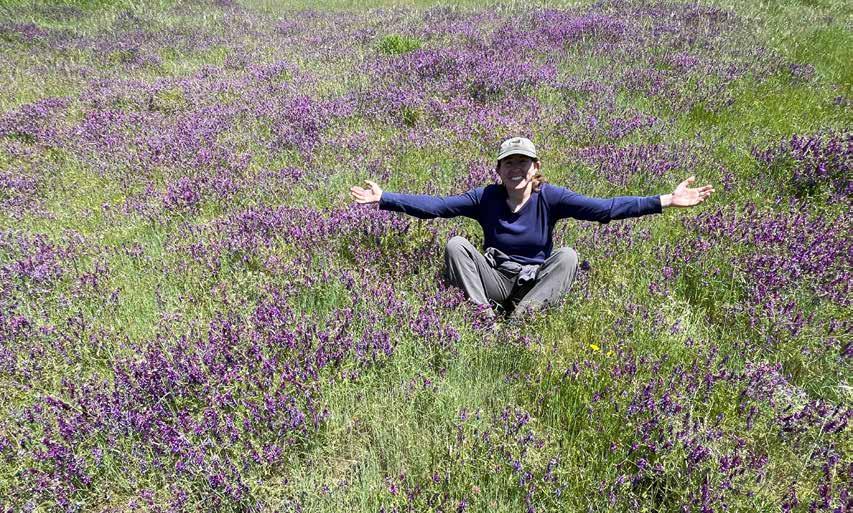

LEFT: View of part of the Tubbs Fire footprint – five years later.
Photo by Michelle Halbur


LEFT: View of part of the Tubbs Fire footprint – five years later.
Photo by Michelle HalburDear Friend,
Reflecting on our challenges and accomplishments of the last year, I’m struck by the recurring theme of regeneration. In the aftermath of COVID-19, wildfires, and amid recent social and economic turmoil, what still shines through is our collective capacity for renewal. At Pepperwood, we track the cycles of our natural world. I remind myself that these processes have evolved over millions and millions of years, through extreme events that exceed our human imaginings, and always in concert with the landscape we call home. This concept challenges my perspective. We are always in the midst of a process, even when it seems like an event.
I’m drafting this missive on the last day of my Global Fulbright Fellowship in Australia. I came here to link our work in California with the work of our global partners facing similar challenges around droughts, floods, fires, and threats to biodiversity. Uniting across oceans and continents with science practitioners reinforces our efforts, empowers innovation, and strengthens our collective commitment to steward our natural world as a global community. Not to mention, it joins us together in the greater process and cycles of life.
Australians know a thing or two about loss and regeneration. Our colleagues in the Southern Hemisphere are responding to extreme events, much like ours, with a commitment to investing public and private resources to restore impacted communities. They work from an understanding of the limitations of natural resources and the need for sustainability. Water supplies, soils, and forests that have
reached a tipping point are being restored through radical nature-based innovations.
Heading back to our own Mediterranean climate and ecosystems of the Pacific Coast Ranges, I consider all that you’ve helped Pepperwood accomplish through your support over the last year. We are defining the stewardship needed for people to grow the health of our natural world. We’re evaluating changes in biodiversity, the climate, and the impact of human activities over time. With your help, we’re not merely seeking to sustain natural systems, but to nurture them so that they thrive.
The way we relate to and honor the world around us matters. Thank you for being right there with us: working with local Indigenous communities, collaborating with scientists across disciplines, engaging community leaders, government agencies, and other nonprofits. Together we can regenerate our native ecology, link the landscapes of California, and foster regeneration in the face of our changing climate.

With immense gratitude,
Lisa Micheli President & CEO
Pepperwood sits within the traditional homeland of the Wappo people. We respect and honor past, present, and future generations of Wappo and their continued connection to this land. We are grateful for the opportunity to gather in this beautiful place and we give our respect to its first inhabitants.
 By Clint McKay (Dry Creek Pomo, Wappo, Wintun)
By Clint McKay (Dry Creek Pomo, Wappo, Wintun)
They started listening to us at Pepperwood, so there was a partnership that was able to grow. We’re in a real trusting spot right now in the relationship. In the future I think that the collaboration needs to be really felt by everybody, and that will be good for the land.”
Clint and Lucy McKay stand with their family to conduct the opening ceremony for the June 13 cultural grassland burn at Pepperwood. Photo by Ian A. Nelson L. FRANK MANRIQUEZ (TONGVA AND AJACHMEM), MEMBER OF THE NATIVE ADVISORY COUNCIL AT PEPPERWOODIt had been a perfect day to burn. After months of preparation, the entire event could have been canceled entirely if the conditions hadn’t conspired to be so blessedly ideal. Now, Devyn Friedfel walks along the charred perimeter of this grassland burn, surveying the result of a now extinguished fire that he’d helped light less than two hours ago.
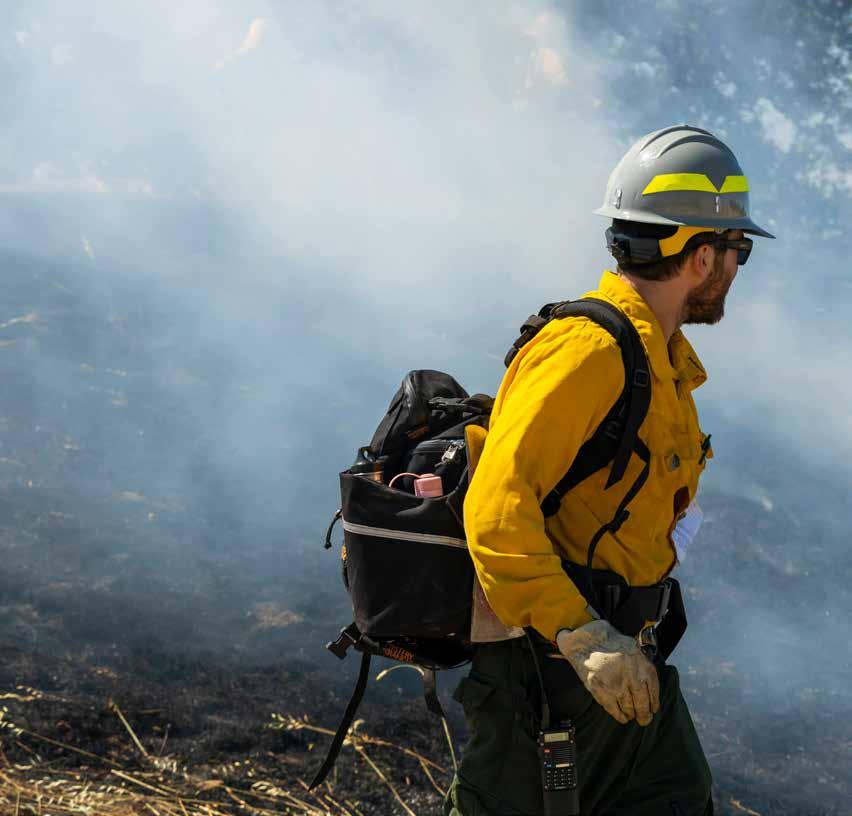
Devyn is Pepperwood’s Assistant Preserve Manager, and he’s in training to become a certified California Burn Boss. This particular burn, which he orchestrated and conducted collaboratively with our Indigenous community and local fire practitioners, was a revitalization of an age-old tradition of what’s known as cultural burning or cultural fire. This Native approach to stewardship uses fire as a tool to provide the land what it needs to be healthy. Revitalizing this method in collaboration with Native communities is one of Devyn’s aims as a Burn Boss and land steward, because he understands how it can help to keep our communities safer.
Photo by Ian A. NelsonThis is not the kind of fire that often gets media attention, but it really should be. When we consider threats to human safety in California, “no fire” can ultimately be just as dangerous as “too much fire.” The key is balance. This relationship between landscape and fire has been understood since time immemorial by Indigenous communities.
In our local ecosystems, fire has a very important purpose and function, acting as a sort of episodic “reset button.” Low intensity intentional fires can eliminate excess fuels, cleanse the system of pests and pathogens, prevent invasive species encroachment, support habitat diversity, and improve water abundance, among other things. There is an entire branch of science called disturbance ecology, which documents how these kinds of cyclical “resets” are key to creating the landscape diversity that supports a healthy ecology.
This burn was designed from start to finish by Devyn as part of his certification to become a California State-certified Burn Boss, and is one element of implementation of our on-site vegetation management plan developed in partnership with CAL FIRE. Fundamental to his plan for this model 27-acre grassland cultural burn, was the presence of diverse community representation and participation. As a next-generation California Burn Boss, Devyn brings his innovation and ambition to realize what for many remains largely aspirational: a space where western and Indigenous perspectives can meet to advance the practice of cultural burns.
His training is overseen by Certified Burn Boss, wildfire ecologist, firefighter, and Director of Audubon Canyon Ranch’s Fire Forward program, Dr. Sasha Berleman. Her mentorship and encouragement has been an invaluable resource to Devyn along this journey. Her training reflects western perspectives, but she’s aligned with Devyn in his
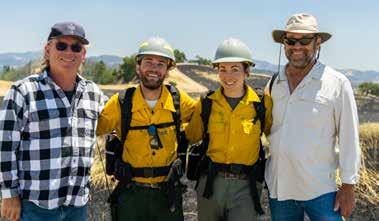
determination to include Native perspectives and collaboration.
This is where Pepperwood’s cultural leader Clint McKay (Dry Creek Pomo, Wappo, Wintun) comes in. Chairman of our Native Advisory Council, Clint’s Wappo ancestors used intentional fire to steward this place since time immemorial and passed that knowledge down through the generations, keeping that human-to-land relationship strong. This burn at Pepperwood marked a unique collaboration between Indigenous and western fire application methods that would not have been possible without Clint’s support.
On the day of the burn, in addition to Devyn, Clint, and Sasha, over 60 people contributed their time and knowledge to make it a success. The team included members of the local Indigenous community; experts from four local fire agencies who had never before worked together; representatives of local land management agencies including Sonoma County Regional Parks, the Laguna Foundation, and Audubon Canyon Ranch (ACR); volunteers from the Good Fire Alliance; and numerous members of Pepperwood’s team.
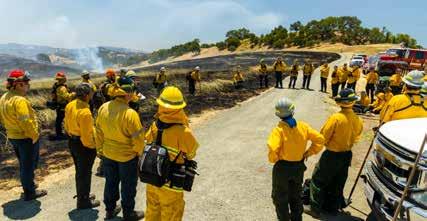
Pepperwood is leading the charge on prescribed burning and brings all the pieces together including scientific documentation before and after a burn, long-term research, cultural burning, and education to promote understanding and acceptance of the natural wildfire process.”
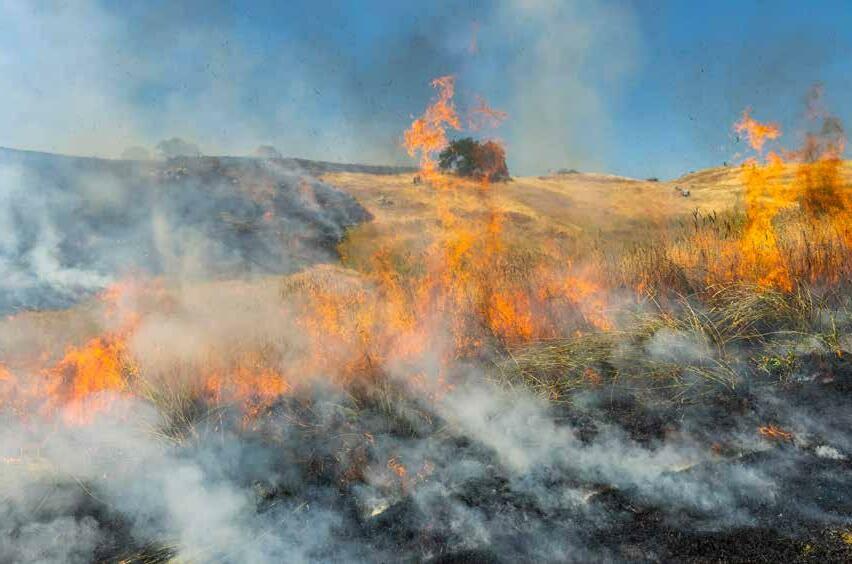 Clint McKay, Devyn Friedfel, Sasha Berleman, and Michael Gillogly.
Photo by Ian A. Nelson.
Over 60 community members and fire practitioners contributed their time and knowledge to make this burn a success.
Photo by Ian A. Nelson.
Clint McKay, Devyn Friedfel, Sasha Berleman, and Michael Gillogly.
Photo by Ian A. Nelson.
Over 60 community members and fire practitioners contributed their time and knowledge to make this burn a success.
Photo by Ian A. Nelson.
The California Burn Boss program is one prong of the State’s response to the threat posed by the onset of megafires. Devyn is a member of the second cohort of Burn Bosses being trained and certified via this critical workforce development strategy. Less than a year ago, only Burn Bosses based at the USDA Forest Service and the California Department of Forestry and Fire Protection (CAL FIRE), with their federal and state backing, were authorized to oversee prescribed fires in California.
Given the increasing frequency and intensity of wildfires throughout the West, regulatory obstacles to Burn Boss training and certification needed to be addressed to meet wildfire mitigation needs. Through this new program, the State of California is expanding the pool of experts trained to safely oversee intentional and prescribed burns, and in the process, is also dealing with the legal liability issues that must be addressed to move forward.
The origins of the Burn Boss program date back to August of 2020, when the State of California and the USDA Forest Service established a shared long-term strategy to manage forests and rangelands. The strategy, among other things, called for treating one million acres of forest and wildlands annually to reduce risk of catastrophic wildfire (doubling the state’s existing 500,000-acre annual commitment – a goal, by the way, that had never actually been realized). This meant a dramatic need for increased human capacity, beyond what the already strapped Forest Service and CAL FIRE workforce could realistically provide.
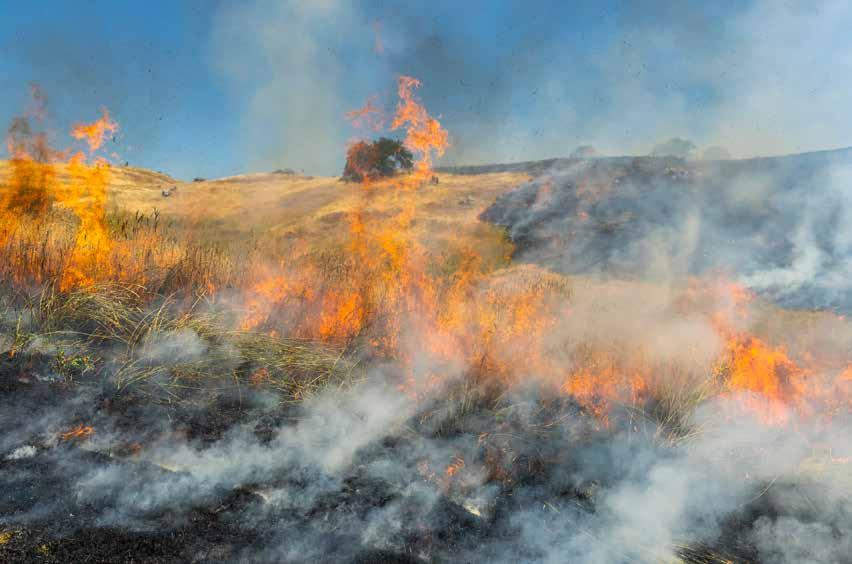
Passed in October of 2021, Senate Bill 332 generated solutions to make the liability hurdles around prescribed fire less prohibitive. Then, to meet the demand for a trained prescribed fire workforce, CAL FIRE launched the StateCertified Prescribed-Fire Burn Boss program, fashioned after an existing program based in the Southern US. The curriculum includes how to develop and implement burn plans, meet safety standards and obtain state and local approval and permits, monitor fire effects, uphold prescriptive requirements, and conduct an “After-Action Review” of the prescribed burn.
Our partners at ACR’s Good Fire program were there during these early days to help make the case and design a model workforce development solution in collaboration with CAL FIRE under Dr. Berleman’s leadership. Devyn is in the final stages of this certification process, meaning he’s passed the test upon completion of his classroom training, and has entered the practical application stage. For this part of his certification, he builds on his previous experience as a land steward and fire response team volunteer with training on
regulatory requirements and team management tasks key to job performance. Designing the burn plan for Pepperwood’s June cultural grassland burn was a critical milestone in this process. It required that he engage stakeholders and participants, design and implement the technical plan, and supervise post-burn wrap-up procedures.
Devyn represents a new generation of fire practitioners. His experiences around fire are varied. Like many of us, on a personal level he too has lost much in the recent wildfires that devastated our beloved Sonoma County. But his career and mentors have made him privy to the beneficial sides of good fire. Fresh and capable, Devyn has set out to help write a new narrative, one that replaces the common depiction of wildfire as only devastating and destructive. Fire can be just as much a healer as it is a destroyer. With this knowledge he aims to strengthen our community and empower Californians with a new understanding of an old tradition that belongs to this place. This land needs good fire, and it is our responsibility to provide it.
Devyn’s hard work and dedication is key to Pepperwood’s role as an “early adopter” and demonstration site for good fire and cultural burns in concert with Indigenous leaders. He is playing a critical role in educating our whole community about how intentional fire treatments can be effectively used to reduce the hazards to human health and safety that we’d otherwise experience due to more catastrophic wildfires.
How we relate to this fire-adapted landscape determines our collective strength in the face of a changing climate. Choose to support the stewardship that supports our whole community.
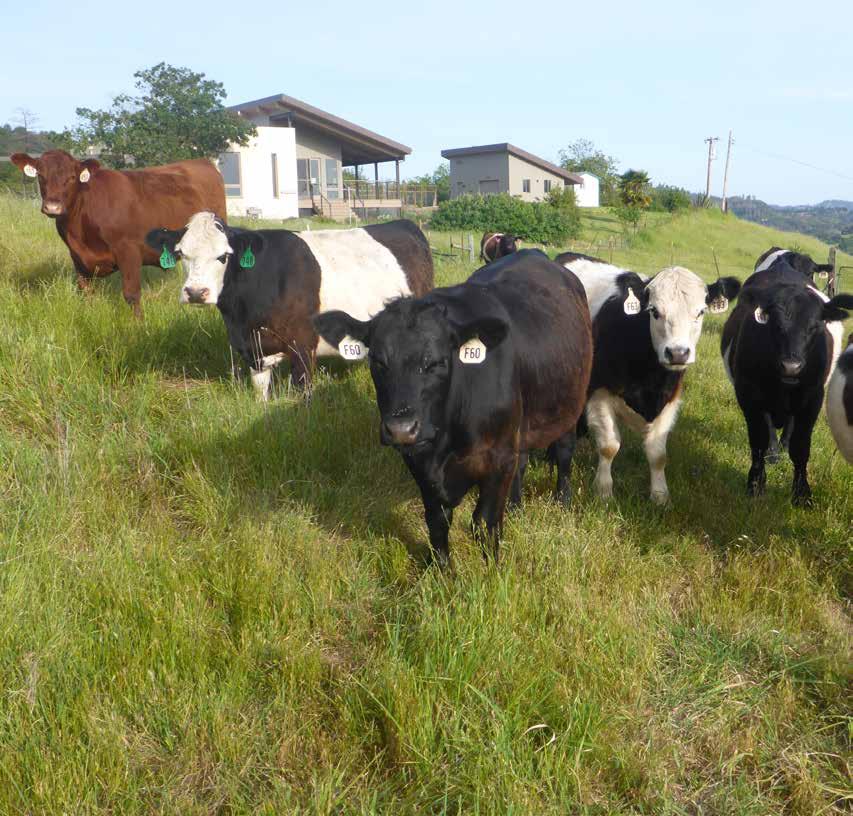
How we relate to the Earth matters. Support stewardship in your own community first, and watch the impact of that work ripple outward.
California’s grasslands evolved with historical disturbances including grazing and Indigenous burning practices, the latter of which is known as cultural fire. Megafauna of the Pleistocene, and more recently vast herds of elk, antelope, and deer, moved across the landscape pursued by wolves and grizzly bears, prior to European contact. This intense grazing pressure was followed by periods of rest as the herds moved through the area. Loss of the elk and their predators, as well as additional biodiversity loss over the last 200 years effectively stopped this natural cycle, reducing our grasslands’ health and resilience as a result. Pepperwood is showing how regenerative agriculture can mimic this natural process with grass-fed cattle replacing the elk herds, and people as the means of moving them. A benefit of this strategy is that in the process of regenerating our grasslands, we can also support local agriculture and provide high quality beef for people.
of grasslands at Pepperwood. Key to this partnership is a mutual understanding that careful herd management is vital in achieving our goals of fostering native biodiversity, carbon sequestration, water infiltration, erosion control, and high-quality wildlife habitat.
Doniga and Erik Markegard have created a successful business bringing high quality beef to consumers while advancing ecologically-sound land stewardship. Their grazing philosophy is “to simulate the large herds of elk and antelope that once roamed California’s grasslands by keeping the herd moving with holistic planned grazing.” This ensures that no area is overgrazed, while stimulating growth and grassland health through proper timing. Partnerships like this one demonstrate how conservation and agriculture can be done collaboratively and with mutual benefits to people and the land.
Blue-eyed grass (Sisyrinchum bellum), which is actually in the iris family, blooms throughout Pepperwood’s native grasslands in the springtime, and is especially abundant after wildfire.
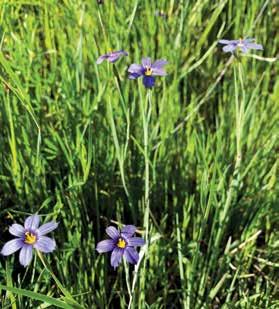
For millennia, Native peoples set fire to these lands to encourage favored foods and plants for textiles and basketry, among other things. Thus, good fire joins regenerative grazing as a foundational element of our stewardship here at Pepperwood. Our stewardship team collaborates with our Native Advisory Council and grass-fed cattle operators to integrate carefully-managed grazing into our stewardship program. Pepperwood volunteers also play an integral role in our perennial native grass restoration work, collecting and propagating seeds and planting out tens of thousands of native plant starts every year.
We’re proud to be partnering with Markegard Family Grass-fed LLC, the first ranch in California to receive the Audubon Society seal of approval. Their Belted Galloway cattle arrived this Spring to start grazing the 900 acres
While in the past conservation practitioners locked cattle out of protected areas, we are learning that cows can actually help protect native grasses, forbs, and wildflowers. Our grazing program also prevents incursions of shrubs into our grasslands and helps keep potential wildfire fuels low — which is how CAL FIRE was able to slow down the Kincade Fire of 2019, by essentially using Pepperwood’s, grasslands as one big fuel break.
Elk, antelope, grizzly bears and wolves may one day return to this landscape. But in the meantime, we will steward our native grasslands with methods that uplift traditional knowledge, support regenerative agriculture, and include our community so that together we can sustain the land that sustains us.
OPPOSITE: Markegard Family Grass-fed’s galloway cattle, grazing in front of the newly built Preserve Manager’s homestead at Pepperwood.

Gerald, now a retired oral surgeon, met Buff almost 50-years ago at a photography workshop at the California Academy of Sciences, where Buff worked for many years. Since the early 1970’s, they have explored and photographed the life and landscapes of Pepperwood.
Gerald and Buff witnessed the power of TeenNat to change lives, and that inspired them to leave a legacy that will foster connections between youth and the natural world at Pepperwood for generations to come. We are eternally grateful for Gerald and Buff Corsi’s continued support. As members of Pepperwood’s Sentinel Society, the Corsis’ legacy gift empowers our community to sustain the planet that sustains us.
World-class nature photographers and long-time Pepperwood supporters, Gerald and Buff Corsi, traverse the world capturing flora and fauna on film and video. But they always come home to Pepperwood. For nearly five decades, Pepperwood has held a special place in their hearts — so much so that Gerald and Buff joined our new legacy giving program, the Sentinel Society, to ensure that sciencebased conservation benefits wildlife, community, open space, and our local youth, forever.
They were both passionate about nature and photography from early childhood, but had lacked access to a place like Pepperwood – where local elementary students now learn in the field how to apply scientific inquiry and observation of the natural world to their own budding interests.

A passion for nature and environmental education drives the Corsis’ commitment to Pepperwood and its mission. Gerald has served as an instructor at Pepperwood’s youth science institute, TeenNat, to share nature photography tips and techniques with the kids. He was honored to provide this hands-on experience in our classroom and was inspired by these dedicated young nature stewards and their growing knowledge and passion for science and the world around them. This was the kind of place-based experience he’d yearned for as a youth.
Pepperwood is here for the long haul. We are realizing a science-based, centuryscale community vision for protecting our region’s land, waters, and wildlife. A gift to Pepperwood’s Sentinel Society ensures Pepperwood can support the regeneration of local lives and landscapes for generations to come.
Learn how you can sustain the planet that sustains us by including a legacy gift to Pepperwood in your will or estate plan.
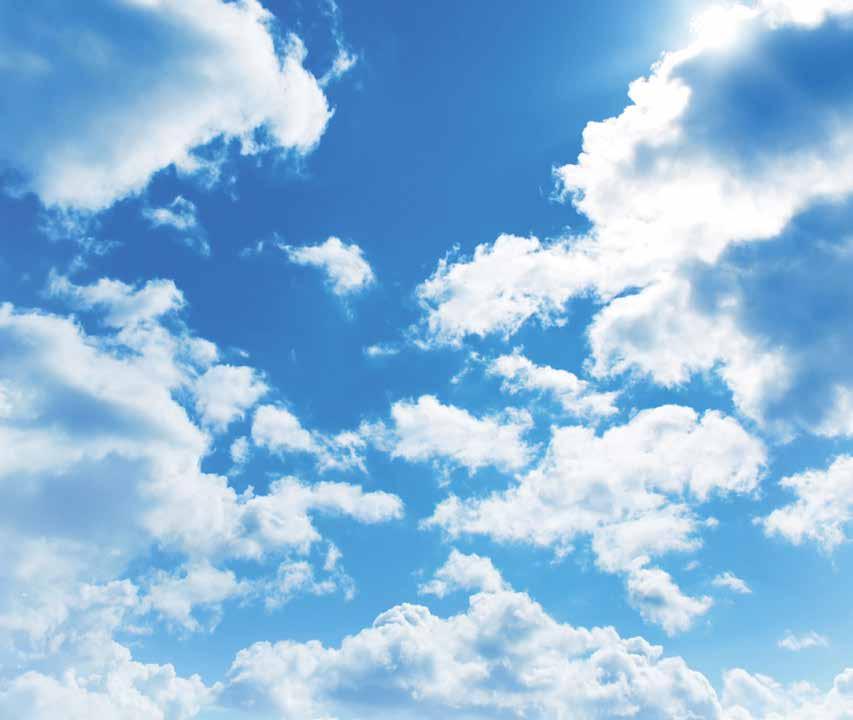
Our connection with Pepperwood goes back 43 years. After all those years of being associated with the property, we feel a close and warm relationship with this beautiful place. We appreciate the fact that it is being utilized for so many important functions and is such a wonderful asset for Sonoma County.”
GERALD & BUFF CORSI, PEPPERWOOD SENTINEL SOCIETY FOUNDING MEMBERSTeenNat participants from the 2022 cohort, observing a feather during a field research day.
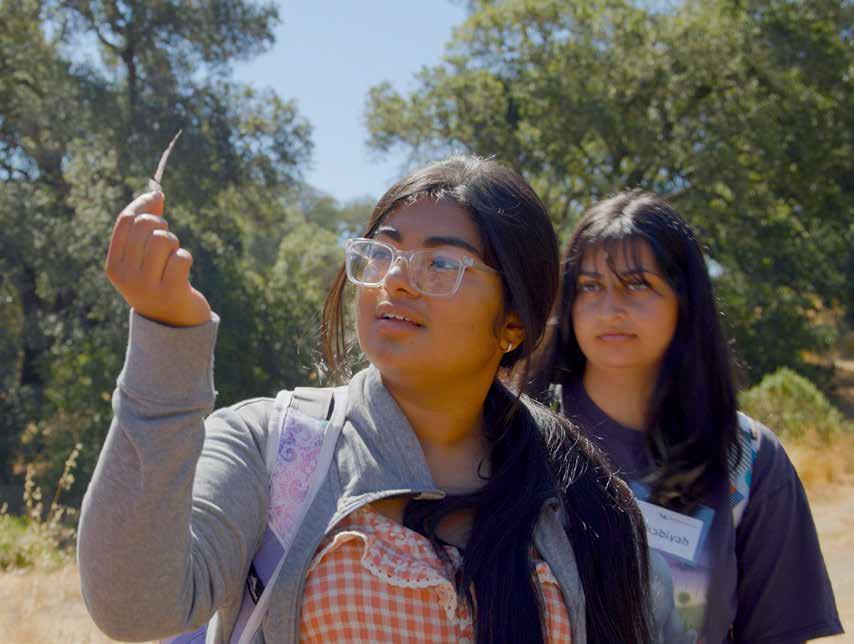 Photo by Ian A. Nelson
Photo by Ian A. Nelson
Prescribed burn at Pepperwood.
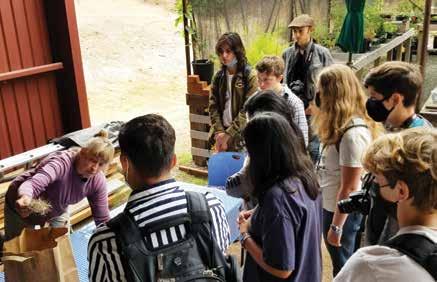

It’s our privilege to introduce the next generation of stewards, scientists, naturalists, educators, and caretakers of the Earth: this year’s incredible cohort of our TeenNat program! TeenNat is an award-winning, evidence-based program that prepares teens to become leaders in protecting and enhancing our natural world. Pepperwood donors fully sponsor this annual program for 24 fully motivated participants ranging in age from 13 to 17 years old. This year, our summer institute returned to an entirely in-person program after two years of adaptation to virtual and hybrid formats.
It felt magical to have the teens back on the land for the entirety of the program. Students returned to the field where they made observations alongside our top scientists, practiced stewardship as members of our preserve management team, apprenticed with our Indigenous education coordinator, and experienced the wonder of our natural world with the mentorship of our environmental educators. Here are some TeenNat 2022 magic highlights.

Let’s inspire our children to care for the life, land, and waters that support us. Empower the next generation through your support, today.
The best part of TeenNat was learning about our part in nature, and what we can do as individuals to help.”
LIAM KELLY, 17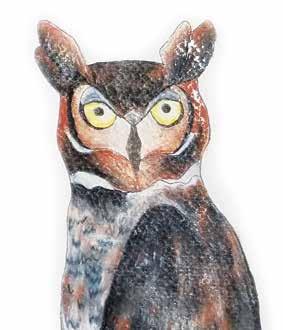
learned was what stewardship is and how it differs from management, along with truly considering other points of view and looking for every possible way to solve a problem.”

DANTE MARQUEZ, 15
I became much more conscious of the organisms around me and the way they interact with each other. I learned to take quiet moments and smell, look, and listen for everything the setting has to offer. I believe that I leave this experience with a stronger sense of mindfulness and a better eye for observation... along with some fascinating wildlife encounters!”
DANIELLE LEVI, 17
To me the word “science” means learning and educating yourself about the natural world. How it works, why it works the way it does, stewardship, and what we can do to help the natural world. To me the word also means hands-on activities that will help the world around us, and learning about the different types of environments, habitats, species, taxonomy, etc. In general, to me it means educating yourself and taking care of our world.”
ESTHEFANY BATRES, 15
The beautiful nature sketches shown here were created by participants of the 2022 TeenNat cohort.
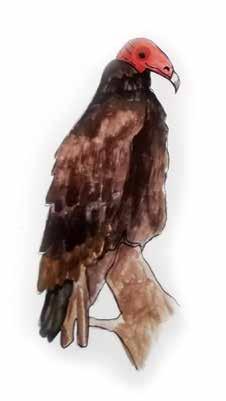
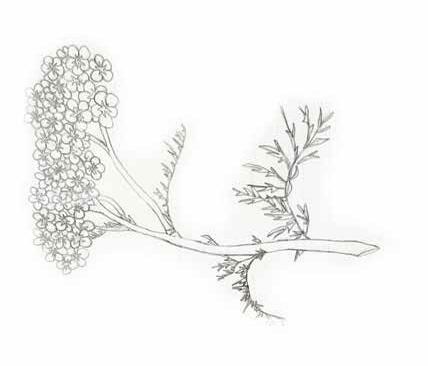
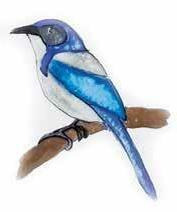

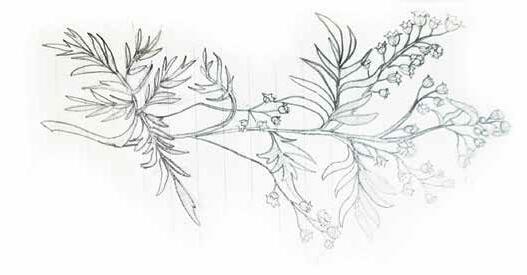

The best part of TeenNat was going out into nature with newfound friends and colleagues. I loved being out observing, learning new things, and having a fun time in nature.”
CESAR ROSALES, 17
Support a culture of coexistence with our wild neighbors!
We are a necessary part of the ecosystem, like the salmon are a keystone species that the ecosystem depends on. Not working on the land has made us weak: physically, mentally, and most of all, spiritually. We need the land and the land needs us, because we speak the language of the land.”
TEKTEKH GABALDON, MEMBER OF THE NATIVE ADVISORY COUNCIL AT PEPPERWOOD

Have you ever heard of a keystone species? If so, you know they’re a species that’s so integral to their ecosystem that if they were removed, the ecosystem would change drastically, because each keystone species fulfills a critical function. Can you name some examples? How about sea otters, salmon, beavers, predatory megafauna like wolves, and even bees.
Let’s take bees as our example. If you’ve ever been stung by one you might angrily curse them in the moment, but you probably wouldn’t enjoy living in a world without these insect allies. And for good reason, since you’d also be sacrificing your own access to more than 70 types of food crops that rely on bees for their critical function: pollination.
Humans have a profound influence on their ecosystems, and can also be considered a keystone species. However, with such power comes great responsibility to understand the impact of our actions on the environment and the plants and wildlife that share our human habitats. In addition to the positive impacts people can have on the land around them through stewardship, like intentional fire and regenerative agriculture, people can also promote a regenerative approach to land use by fostering landscape connectivity.
In Northern California’s Coast Ranges and across the West, patterns of human development are carving the natural landscape into a patchwork of fragments. A black bear walking a random path through undeveloped areas in the West is on average only 3.5 miles from human development. Sonoma County, where Pepperwood is located, is known for its lush landscapes, yet it is accruing habitat conversion to development 20% faster than other California counties and 80% faster than elsewhere in the US. This landscape fragmentation is detrimental to ecosystem health and the watersheds that sustain us.
Well-connected landscapes are mixtures of natural and protected areas linked together by blocks and pathways of viable habitat. Open streams, ridgelines, working lands, and natural landscapes protect wildlife movement on daily, seasonal, and generational time scales. Historic records and future forecasts show our region is getting hotter, drier, and faces more frequent and extreme wildfire and precipitation
events. To increase the likelihood that people and wildlife can coexist and thrive in changing conditions, it is critical to fill knowledge gaps and build networks of people regenerating and linking landscapes that sustain wildlife and wildlife movement.
One of Pepperwood’s strategic initiatives, Linking Landscapes for Wildlife, focuses on cultivating a culture of healthy wildlife-human coexistence. With partner land trusts and park agencies, we are evaluating landscape-level opportunities for wildlife movement for climate resilience. Land acquisition organizations use these results to prioritize and justify private and public investments in land protection. We aim to increase the pace and scale of actions that improve habitat pathways throughout Northern California.
For many species, we face substantial gaps in knowledge about population sizes, distributions, and habitat requirements.
With more than a decade of Wildlife Picture Index (WPI) data collection at Pepperwood and surrounding areas, our team is a leader in monitoring trends in species abundance and behaviors. Understanding key processes like reproduction and dispersal are vital to guiding local and regional conservation planning and stewardship actions.
How do we reduce barriers to wildlife movement across our landscape, especially as our climate changes? How has wildlife been impacted by recent fires and rebuilding efforts? How can we better connect our natural resources and landscapes to support wildlife and humans? The strength of our work here at Pepperwood is to connect our communities to solutions that allow us to thrive alongside our wild neighbors.
ABOVE: Wildlife Specialist, Steven Hammerich collects black bear scat samples to support research on their population size, distribution, and habitat requirements. Photo by Makayla Freed
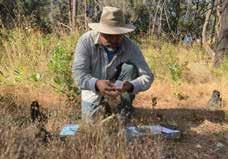
Sonoma
Laguna Foundation, Santa Rosa Junior College Shone Farm, and Monan’s Rill Community.
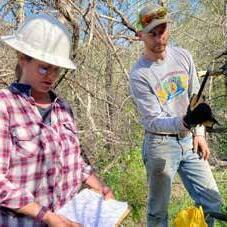
Trust,
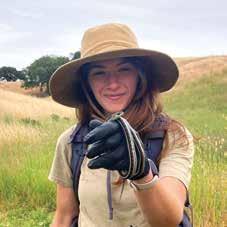
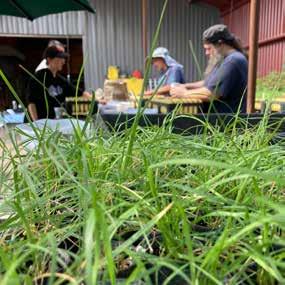
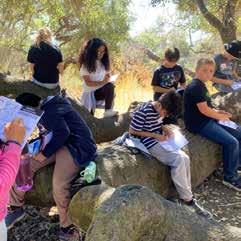
The research done at Pepperwood is useful not just for my community but all the communities worldwide dealing with climate change and the risks of devastating wildfires. Knowing that [when I volunteer] I am helping my community and the greater good, makes it that much more rewarding.”
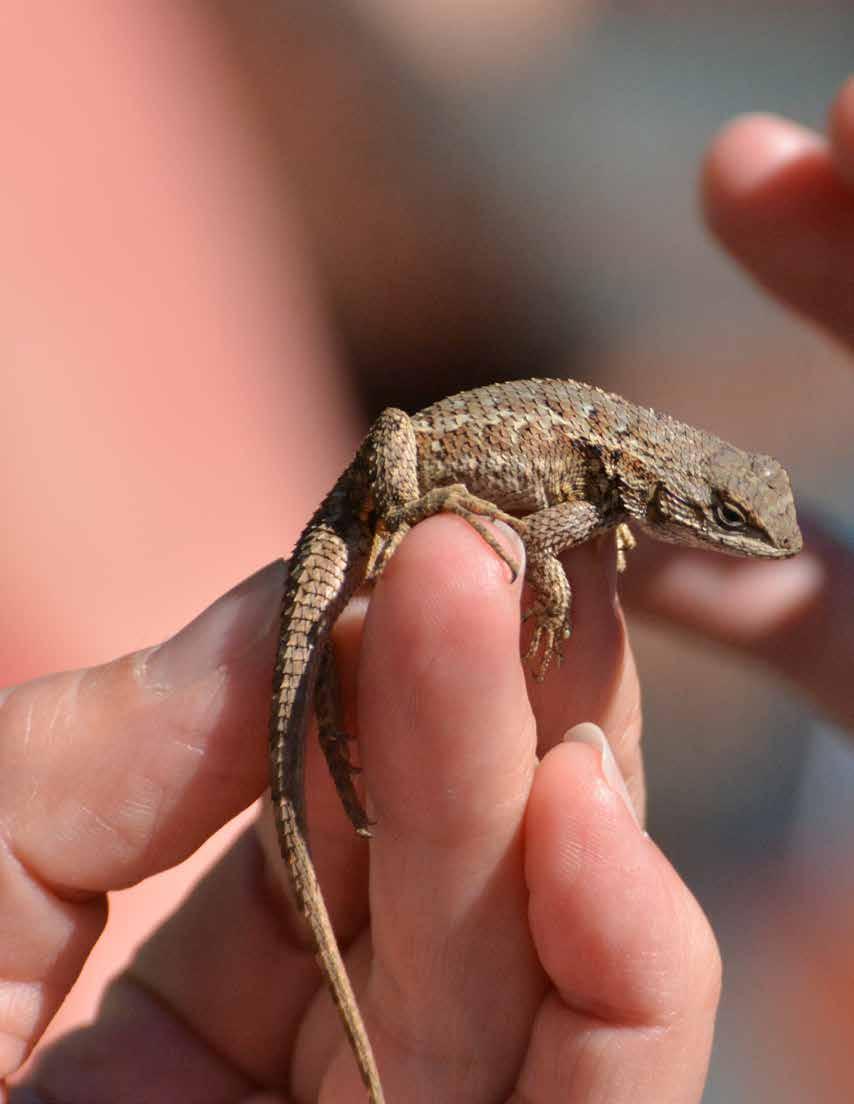
STEVE FINKELSTEIN, FREIND OF PEPPERWOOD & VOLUNTEERWestern fence lizard. Photo by Isabel Luevano
$2,918,635
Individual Gifts and Membership 13%
Foundation/Corporate Grants 23%
Earned Income 23%
Government Grants 28%
Other Income 13%
$3,130,564
77%
13%
10%
At Pepperwood, we are resolved to create a future where we understand, value, embrace, and actively protect the diversity of Earth’s natural systems for the benefit of current and future generations.
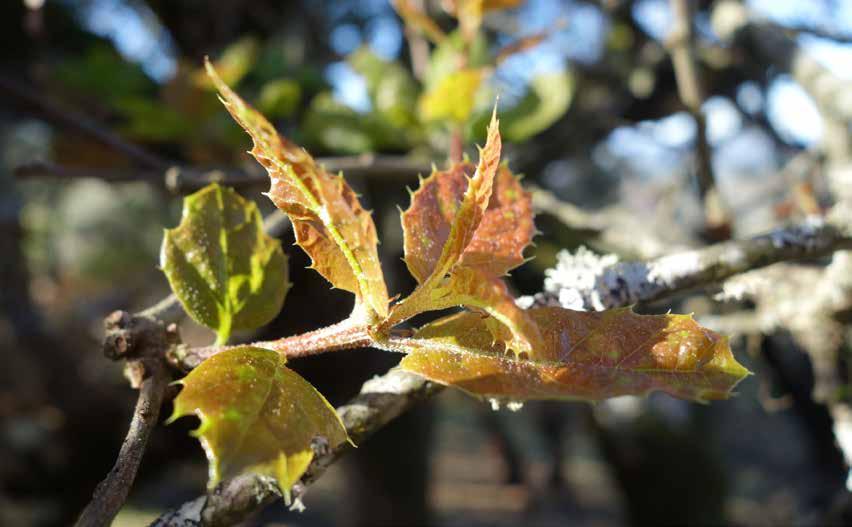
Herbert Dwight, Chairman – Co-Founder, Pepperwood Foundation
Jane Dwight, Secretary – Co-Founder, Pepperwood Foundation
Paul Downey, Treasurer – Investment Banking Consultant
Dr. Shannon Bennett, Director – Chief of Science, California Academy of Sciences
Dr. Frank Chong, Director – President and Superintendent, Santa Rosa Junior College
Rob Das, Director – Co-Founder, Splunk
Bill Dwight, Director – Founder and CEO, FamZoo.com
Kate Ecker, Director – Consultant to Social Enterprises
Dr. Lisa Micheli, President and CEO*, Pepperwood Foundation
Roger Nelson, Director – President, Midstate Construction
Lisa Carreño, President and CEO – United Way of the Wine Country
Julianna Graham, Director – Senior Business Development Manager, Wells Fargo Bank
Clint McKay (Wappo, Wintun, Dry Creek Pomo), Chairman
Lucy McKay (Pomo, Northern Sierra Miwok), Member
L Frank Manriquez (Tongva, Ajachmem Rarámuri), Member
TekTekh Gabaldon (Mishewal Wappo), Member
*Indicates membership in Executive Committee leadership team
Operations, Communications and Development
Stephanie Beard, Communications Coordinator
Ben Benson, Cultural Resources Coordinator
Gwynne Corrigan, Development Manager* Isabel Luevano, Finance and Operations Coordinator
Kelly Kohrs, Business System Analyst
Lisa McCortney, Senior Accountant and Human Resources Specialist
Sloane Shinn, Donor Relations
Research and Preserve Management
Sonja Barringer, Facilities Assistant Dr. Tosha Comendant, Conservation Science Manager*
Ryan Ferrell, Research Technician
Devyn Friedfel, Assistant Preserve Manager
Michael Gillogly, Preserve Manager*
Morgan Gray, Conservation Analyst Michelle Halbur, Preserve Ecologist
Steven Hammerich, Wildlife Specialist Makayla Freed, Field Technician and GrizzlyCorps Fellow
Education
Margaret Boeger, Education Director* Holland Gistelli, Education Program Coordinator
Stephanie Gonzalez, Bilingual Environmental Educator
Clint McKay, Indigenous Education Coordinator Summer Swallow, Bilingual Environmental Educator
We are so fortunate to have a world class science-based environmental preserve whose focus is climate resilience. Pepperwood’s vision will benefit our community both economically and ecologically and will help us recover more quickly from climate impacts in the near and long term.”
JULIANNA GRAHAM, WELLS FARGO COMMERCIAL BANKING SENIOR BUSINESS DEVELOPMENT OFFICER & PEPPERWOOD BOARD MEMBER
Photo by Gary Morgret
This
Lisa Micheli Susan Philpot Rotary Foundation of Santa Rosa Jack and Diane Stuppin Fund of CFSC
$50,000+
Herb and Jane Dwight Rob Das and Beth Berkson


$10,000–$24,999
Bedford Family Foundation Gordon Blumenfeld Codding Foundation Community Foundation Sonoma County (CFSC)
The Gordon J. Dow Trust Joanne D. Dow Family Charitable Fund Paul and Hallie Downey Robert N. and Nancy A. Downey Foundation Dwight Family Charitable Trust Foley Family Charitable Foundation GrizzlyCorps
Henry and Marilyn Hansel Mark and Elizabeth Hanson Dick and Lynn Kelson
LEOPARD LILY CIRCLE

$1,000–$4,999
Tim Yarish and Rebecca Lee
Bruce Hartsough and Lesli Lee Randy and Kelly Hicks Tom and Jane Holt
Uplands Family Foundation
Michele Ingham
Margaret Kaplan
Melanie and Perry Karsen Rick and Sue Kavinoky Keysight Technologies
Bruce Kikuyama and Mark Smigelski Karina Maher & Michael Kovac
Linda McJannet
Bob and Stacy Mertz Gerry and Lilly Mugele
William and Marilyn Henderson William and Flora Hewlett Foundation
Micheli Family Foundation Roger and Monica Nelson Preston Family Donor Advised Fund
Purdom Family Fund Vic and Karen Trione Jim Walters and Diane Lubich
Michael and Paula Rantz Foundation Redwood Empire Sawmill Sonoma County Vintners Foundation Laney Thornton Foundation Thelma Doelger Trust For Animals Robert Weltman and Janice Butler Fred Wiele
The Joseph C. Zils Family Fund
$5,000–$9,999
Shannon Bennett and Durrell Kapan Gerald and Buff Corsi Drexler Estate Fund
Virginia L. Fifield Fund Marie and John Huber Tompkins/Imhoff Family Fund at CFSC

Fritz and Beverly Maytag
Robert and Kim Agrella David Andersen and Suzanne Chapple Tom and Julie Atwood Brad and Agata Baker Stephen and Linda Barnhart David and Celine Berman Family Fund Simon and Kimberly Blattner Jason and Mindy Brown Bull Family Fund Lynne LaCarruba Pat Callahan Clif Family Foundation Collins Family Fund Ronald and Carol Cox Jeanne DeJoseph and Suzanne Dibble Electra De Peyster Charitable Fund George De Peyster Kate Ecker and John Mackie Diane Ellis-Caruana and Michael Caruana Fred and Robin Euphrat Stephen Gehring and Robin Fanning Augie Grube Mary Finn Bob and Marcia Fosberg Kerry Francis and John Jimerson Dennis and Sue Fujita Lynne Bisagno and Michael Garwood Leah and Bill Gehri The Barrie and Julianna Graham Charitable Fund Julia L. Grant Fund of CFSC William and Jean Graustein Fund Aileen Santos and Kathy Haas David Hearth and Lauren Hall
Jim Newsome and Sally Tischler Robin Newton-Crawford and Jim Crawford
Susan and David Parkinson Sheba Person-Whitley A.G. and Betsy Phillips
Jim Phills
Stephen Pratt
Tim and Pat Preston Sue and Michael Rataj John and Carlene Reininga Harry and Dee Richardson Rotary Foundation of Santa Rosa Richard and Katherine Schram
Soiland Family Charitable Fund of CFSC Elisa Stancil and Chuck Levine
Polly Stephenson
Summit State Bank Teri Swallow
The Swanhuyser Family
The Dorothy and Jonathan Rintels Charitable Foundation
The Heck Foundation
The Press Democrat
Denman and Kate Van Ness Dr. Steven and Susan Vargas
Verlander Family Charitable Fund Ana and Paul Von Hirtz Warren and Janis Watkins Nelson and Jane Weller Michael and Bobbie Wilsey
Wunderlich Family Gift Fund (continued)
This list reflects our generous donors who gave $100 or more between July 1, 2021 and June 30, 2022
Tom and Peggy Abbey David and Susan Abernethy
Jory Adamson and Paul Weinberger Kaj and Else Ahlmann Janet and James Alfieri AmazonSmile Foundation Carrie Anabo Gail Anderson Janet Anderson Pam Arifian Pedro and Karen Arroyo Anne-Marie Bakker Chris and Phyllis Baldenhofer Heidi Ballard
Judith Barry Carola and Robert Bartz Meg and Tom Beeler Charlyn Belluzzo
Harriet Buckwalter & Bill Blake Jenny Blaker
Toby Block & Joan Dambros Margaret and Tanner Boeger John and Barbara Bohn Kristan Bonnett
Janet Bosshard Kathy Bregder
Fred and Sandy Brewer Dan and Donna Brown Bernie and Barbara Cain Terry Price and Kerry Campbell-Price Carol Shelton
Harvey Hoefer and Lisa Carr
Lisa Carreño and Lorene Irizary Chris Carrieri and Connie Cloak Helen Chen and Tom Fetter Tom and Emmy Cleland Keena and Chris Clifford Ed Colby
Tosha Comendant and Everett Kaplan
J.P. Ellis and Joan Comendant Lynn Cominsky Ralph and Liza Cotter Cathryn Couch Renee and Chris Cowing Kelli Cox
Cindy Daniel & Doug Lipton Richard and Bill Jane DeBriyn
Deborah and Paul de Halle Charlie and Gretchen De Limur Rick and Teresa Denniston Barbara Drago Christine Dreyer Alex Dudoroff
Payton Dwight Bill and Dawnine Dyer Steve and Pat Edelstein Kaesa and Mike Enemark Daniel Erat Erika Erzberger Christopher and Tamara Evans Melinda Evans Robin Fautley Judith Fenley Mr. Theobald and Mrs. Chandler Danita Finch Larell Fineren Steve and Robin Finkelstein John Fisher Eileen Fong-Jang Ned Forrest and Leslie Whitelaw Arthur Friedfel Sandi Funke and Mike Wangbickler Karen and Larry Bill and Lyn Galliani Jeana Garcia Betsy Garner Nolan and Lynn Gasser Wayne and Pamela Gehrke Thea Goldstine
Susan & Joe Gorin Natasha Granoff John Grech Carolyn Greene Bruce and Tockhwock Grimes Emily Grossman Rich and Judy Guggenhime Ray and Amanda Haas Dave and Michelle Halbur Healy Hamilton Steven Hammerich Thomas Hammond Richard and Carol Hanna Jim Hanson Melinda Harris Terry and Carolyn Harrison Carol and Bob Hasenick Sally Heath Thea Hensel Sandra Hernandez and Viviana Paredes
Nancy and John Hoogendyk Ann Howald and David Leland Mary Irving and Gary Schick Cliff and Irene Ives Samuel Jackson Stacey Jennings Jerry and Linda Johnston Jenny Jones and Will Furth Penny Jones
Jon Joseph and Lynne Esselstein Anthony Jovenitti and Andrew Kohrs James and Chrystal Kafka Lilo Kangas Pamela Kaplan and Randy Thom Julie Kawahara
Maribeth Kelly James and Katherine Kirkham Suzanne Knecht Lorna Kohler Mike and Lynn Kohrs Ron LaBruzzo
Jennifer Lamb Juliet Langley Jennifer Lawrence Andrea Learned & Donna Main Susan Lehr Lucy Liew Love and Craig Love Terry and Misty Lindley Ken Link David Loeb Jessica Lofgren Sam Lord Barbara Lowell Doerte Mann
Suzanne Marr and John Baylor Valerie Marsh Sandra Martensen and Alan Selby Laura Martin Marcie and Richard Martinez Marty and Phyllis Martin-Vegue Linda Mayberry-Chavez McBaine Family Fund Richard McDaniel Lynn and Gerald McIntyre Julie Menack Adina Merenlender
Alysa Miller and Keaton Close Robert Miller Marcella Moloshco Linda Mori Lynn Mortensen Barbara Moulton and Tom Helm J Mullineaux
Cynthia Murray
Johanna Muth
Stephanie Nacouzi
Tanya Narath
Lupe Navarro
Ian Nelson
Ren Nelson
Network For Good Bill Strathmann Andrew and Nancy Nichols
Harris Nussbaum
Cory and Mike O’Donnell
Marty and Sheri Olhiser Manuel Oliva Bruce Orr
Joan Osterman
Kathleen Page and Michael Graves Carole Pate
Jim Perry Connie Petereit Adrienne Pettit and Chris Hunt
Joseph Phair
Chris and Amy Pino
Rhoann Ponseti and Stefan Jonson Jan Rasmussen
Stephanie Reed Matt Reid and Beatrix Webb
Karen Reyes
Roma Wright Robbins Charitable Trust
Alan Rogers Mike and Barbara Rosen
Phyllis Rosenfield
Judith Rousseau
Whitney Rymes
Robert Sargent and Bic Ha Dovan Harold and Jo Anne Schlegel Keith Schoenthal
Laurence Seaton
Martha Selig
Cristi Shanahan
Judith Shaw
Wylie and Judy Sheldon
Jerry and Laura Sherman Roberta Shippey
Kristine Siebert
Shelley Simmons
Karen Sinell
Sirota/Sottile Family Foundation Frank and Heather Smith Jessica Soulie
Susan St. Marie
Kat Stephens
Matthew and Polly Stone
Rick and Jocelynn Stone
Calvin and Leny Strobel
Genevieve Taylor and Christopher Peck
Mary Ann and Larry Tenorio
Steven Thomas
Karen Thompson and Bob Switky
Erica Tom Diane Toso
Neva Turer
Francesca Tyrnauer Peter and Marian Van Alyea Philip Van Soelen
Jennifer Velasquez
Mike and Elaine Von Der Porten Therese Walker
Cindy Walsh
Tom and Brenda Walsh
Wendy Ward Sally Weed
Ronald Welch and Ellen Watson
Gretchen Whisenand Linda Widdifield
Andrew
Debra and Kai Nissley and Kurt Willig Kay Woods
Elementary students participating in Pepperwood’s Students Conducting Environmental Inquiry (SCENIQ) program, using bilingual nature journals to document their experience. Photo by Isabel Luevano

Since our founding in 2005, Pepperwood has established itself as a leader in crafting resilience solutions for California’s wild and working lands. Located in the heart of Sonoma County — a globally recognized biodiversity “hotspot” — Pepperwood manages a 3,200-acre biological reserve and the Dwight Center for Conservation Science. The Dwight Center serves as a hub for ecological research and education. An important refuge for more than 900 species of native plants and wildlife, our reserve is a living laboratory hosting researchers from around the world. Serving tens of thousands annually, Pepperwood’s operations are supported by individual gifts, foundation and government grants, and fee-for-service revenue. Our calling is to bring scientists and community together to ensure that local communities and our natural world continue to thrive together for generations to come.
With the vital support of our donors, Pepperwood makes environmental education affordable, accessible, and a whole lot of fun!
ON THE COVER: Redwoods regenerating after fire. Photo by Michelle Halbur
BELOW: GrizzlyCorps Field Technician, Makayla Freed in a field of wildflowers at Pepperwood.
NEWSLETTER EDITOR: Stephanie Beard
